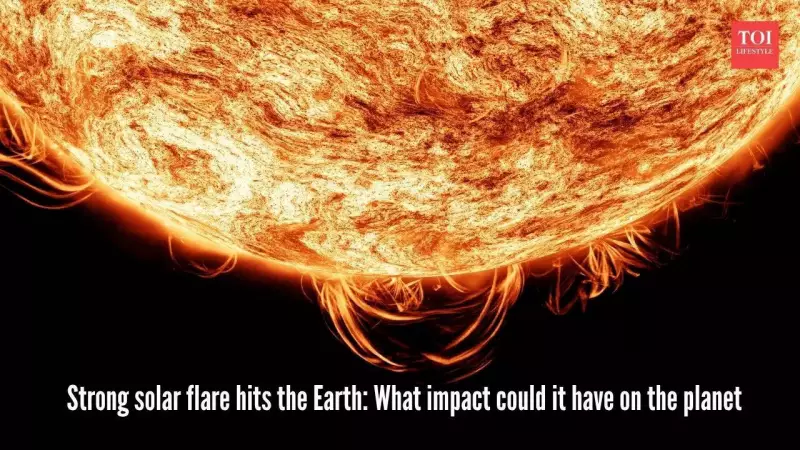
A massive solar eruption has struck Earth's atmosphere, creating one of the most spectacular celestial displays in recent years while simultaneously demonstrating the Sun's powerful impact on our planet. The intense solar activity originated from an active sunspot known as AR4274, which unleashed a barrage of energetic particles that collided with Earth's magnetic field.
Rare Ground Level Event Detected
The solar activity reached its peak with an X5.1-class solar flare, one of the most powerful categories of solar eruptions. This event produced a surge of highly energetic protons that penetrated deeply into Earth's atmosphere, with some particles even reaching ground level in what scientists call a Ground Level Event (GLE).
Professor Clive Dyer from the Surrey Space Centre confirmed to spaceweather.com that "Neutron monitors around the world are detecting an unusual spike in cosmic-ray activity, evidence of what's known as a Ground Level Event (GLE)." These events are exceptionally rare, typically occurring only once or twice per solar cycle, making this occurrence particularly significant for researchers.
Widespread Impacts Beyond Auroras
While the visual spectacle of auroras has captured public attention, the solar storm's effects extend far beyond atmospheric light shows. The National Oceanic and Atmospheric Administration (NOAA) described this as the "most energetic and fastest of the CMEs" that have erupted in recent days.
The storm has created several operational challenges:
- Satellites are experiencing bombardment by solar protons, risking operational disruptions and potential data corruption
- Radio transmissions and satellite GPS accuracy have been impaired, particularly near polar regions
- Air traffic control systems face potential disruptions, especially for flights operating at high latitudes
Professor Dyer highlighted that the radiation burst resembles the last major GLE recorded in December 2006, which notably increased radiation exposure for passengers flying at high latitudes by approximately 20%, raising important health considerations during such events.
Historical Context and Auroral Display
Solar storms have historically caused significant disruptions. The infamous 1859 Carrington Event set telegraph lines ablaze worldwide, while a 1972 storm reportedly detonated underwater US sea mines near Vietnam.
For skywatchers across the United States, the current solar storm presents a remarkable opportunity. According to the latest NOAA forecast, people in up to 21 American states could witness the northern lights, with visibility extending as far south as Florida, Texas, and Alabama.
The complete list of states where aurora visibility is possible includes:
- Alaska, Washington, Idaho, Montana
- North Dakota, South Dakota, Wyoming, Minnesota
- Wisconsin, Michigan, Iowa, Illinois
- Indiana, Ohio, Nebraska, Pennsylvania
- New York, Vermont, New Hampshire, Massachusetts, Maine
Of course, visibility depends on clear skies and local weather conditions, but prepared skywatchers across these regions could experience one of the most spectacular celestial displays in recent memory.





